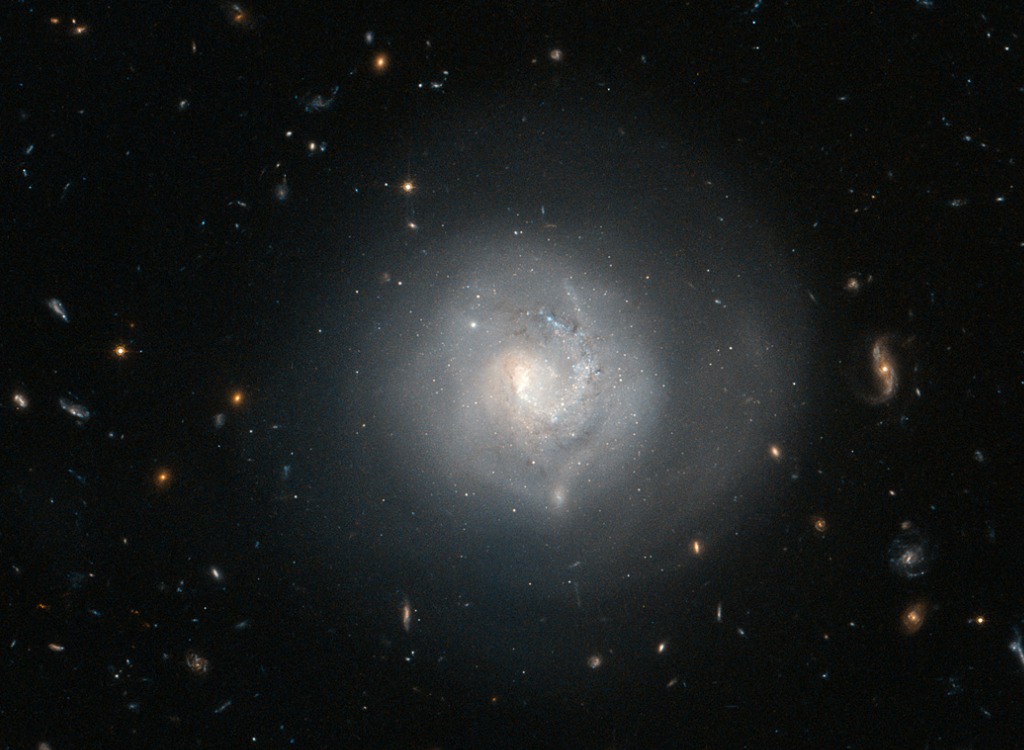
A new image from the Hubble Space Telescope provides the clearest view yet of a distant galaxy, which is surrounded by small galaxies even more distant than itself. Called Markarian 820 (or Mrk 820), it can be found 300 million light-years from Earth toward the constellation of Bootes.
It is classified as a lenticular galaxy, which means, morphologically speaking, it has characteristics of a spiral and elliptical galaxy. Galaxies in the former group—including our own, the Milky Way—have defined features: including winding spiral arms; formidable, bright cores; disks; and distinct patches of blue and pink star-forming regions. Elliptical galaxies, on the other hand, are much larger than their spiral counterparts, but they lack much of what makes other types so picturesque.
The ESA expands on the nature of Mrk 820, and other galaxies like it:
Lenticular galaxies like Mrk 820 are in the transition zone between ellipticals and spirals and lie right where the fork divides. A closer look at the appearance of Mrk 820 reveals hints of a spiral structure embedded in a circular halo of stars.
Surrounding Mrk 820 in this image is good sampling of other galaxy types, covering almost every type found on the Hubble Tuning Fork, both elliptical and spiral. Most of the smears and specks are distant galaxies, but the prominent bright object at the bottom is a foreground star called TYC 4386-787-1.
This image of Mrk 820 was submitted into Hubble’s Hidden Treasures image processing contest by Judy Schmidt.